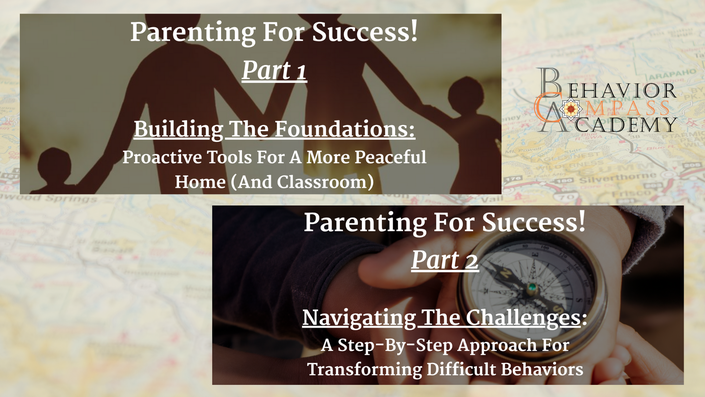“How can I get timeouts to work for my child?”
This happens to be one of the more common questions we've heard from frustrated parents who are overwhelmed and struggling to find ways to manage their child’s difficult behaviors.
In this video course we address that question by offering more than just the basic “how to use a timeout” information often found in other online resources. Instead, we emphasize the importance of using timeout as just one part of a comprehensive behavior support process; a process that starts with a plan for encouraging positive behaviors, thereby making timeouts an intervention of last resort.
Simply put, the most effective use of the timeout strategy starts with a plan for decreasing the need to actually use it!
However, we also recognize that there are still likely to be occasions where the timeout tool may be useful for responding to certain challenging behaviors. When faced with those challenges, we want to be sure you and your child are prepared to go through that process safely and effectively.
Participants in this course will be provided with examples and demonstrations of a step-by-step script that will help navigate a firm, neutral and consistent approach for applying this strategy when needed. The curriculum also includes several role-play vignettes (with follow up discussions) demonstrating how to teach the timeout process to a child, as well as ways to remain consistent with a child who may be argumentative, out-of-chair, or physically resistant.

Frequently Asked Questions
Is it okay to use timeouts with my child?
Timeout may be one of the most controversial behavior intervention strategies for parents and educators. It also happens to be one of the most researched, with decades worth of data supporting its effectiveness as a tool for responding to and discouraging challenging behaviors WHEN APPLIED CORRECTLY. Even some of the most vocal critics have acknowledged that “(timeout) is an overall approach supported by the research as helpful for many children” when utilized properly (Siegel & Bryson, 2014b).
What can I expect to get out of this course?
This course will help set parents and caregivers up for success by:
- Sharing the fundamental keys to correctly apply the timeout strategy using a process supported by various professional organizations, including the American Academy of Pediatrics and the American Psychological Association
- Identifying how and where timeouts fit within a more comprehensive behavior support plan
- Knowing the 10 Essential Steps for an effective timeout when one is faced with challenging behaviors
- Seeing the 10 Essential Steps applied through video demonstrations and step-by-step reviews
How do I know this course contains accurate and up-to-date information regarding timeouts?
- This course has been put together by a team of clinical behavioral health professionals with decades of teaching (and successfully applying) comprehensive behavioral support strategies for thousands of parents, educators and early-childhood professionals
- The curriculum is based on nearly half a century of research validating the long-term effectiveness of timeouts as a part of comprehensive behavior support strategy.
- The documented benefits of a properly used timeout technique include*:
- Significant reductions in challenging behaviors
- Enhanced demonstration of self-control
- Healthier emotional regulation skills
- Improved parent-child relationships
- Information is consistent with the American Academy of Pediatric’s recommended usage of timeouts as “as an effective disciplinary measure”
*Citations available upon request
How long will I be able to access the course after purchase?
You will have full access to the course content for one year from the date of purchase.
Course Curriculum
Welcome!
Available in
days
days
after you enroll
Encouraging Positive Behaviors: The first step to using timeouts is to make them unnecessary
Available in
days
days
after you enroll
Why Do We Need Timeout In Our Behavior Change Toolbox?
Available in
days
days
after you enroll
Timeout Basics
Available in
days
days
after you enroll
Applying The Basics
Available in
days
days
after you enroll
Introducing Timeout To Your Child
Available in
days
days
after you enroll
Timeout With A Cooperative Child
Available in
days
days
after you enroll
Timeout With An Argumentative Child
Available in
days
days
after you enroll
Timeout With An Out-Of-Chair Child
Available in
days
days
after you enroll
Timeout With A Physically Resistant Child
Available in
days
days
after you enroll
Final Thoughts
Available in
days
days
after you enroll



